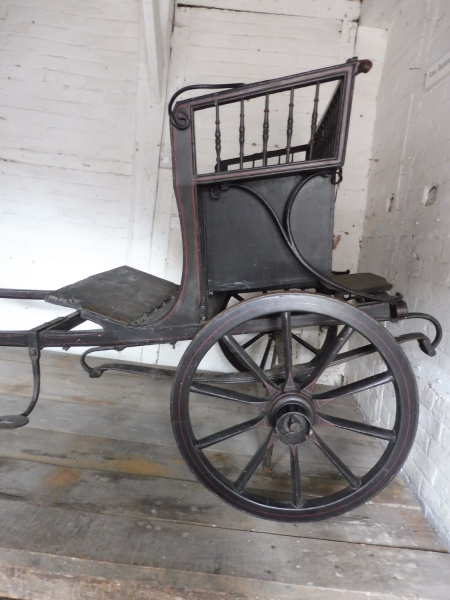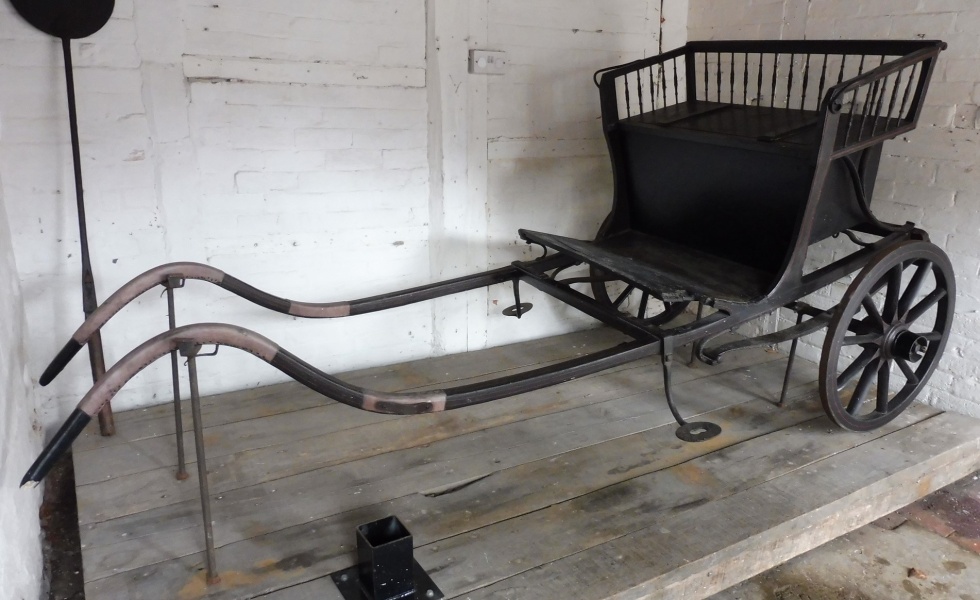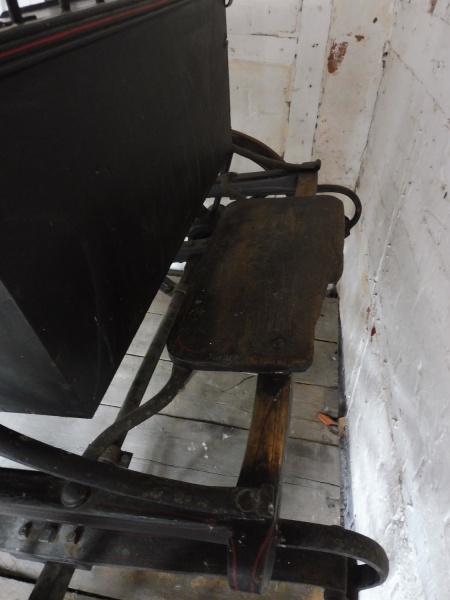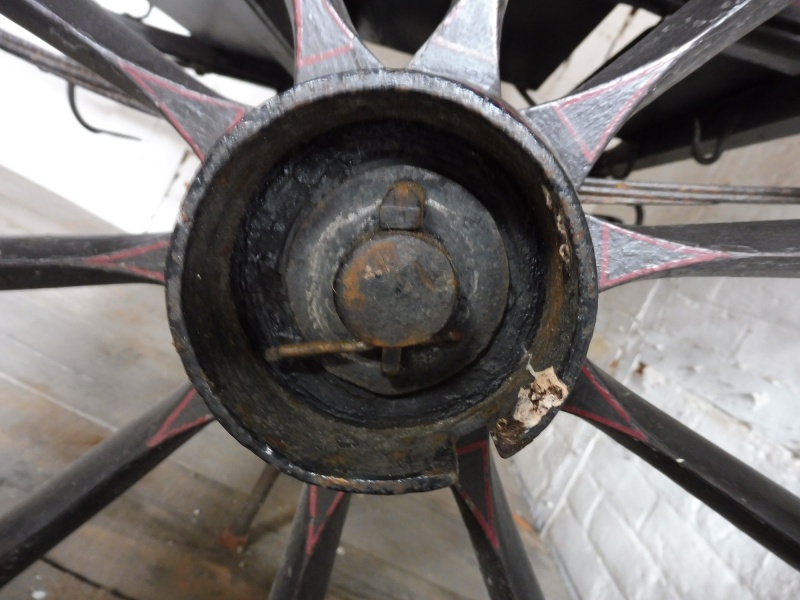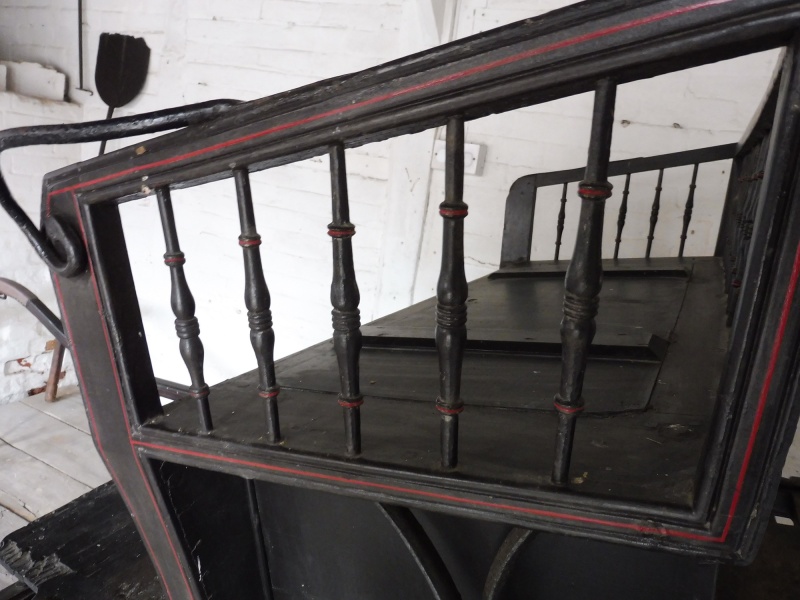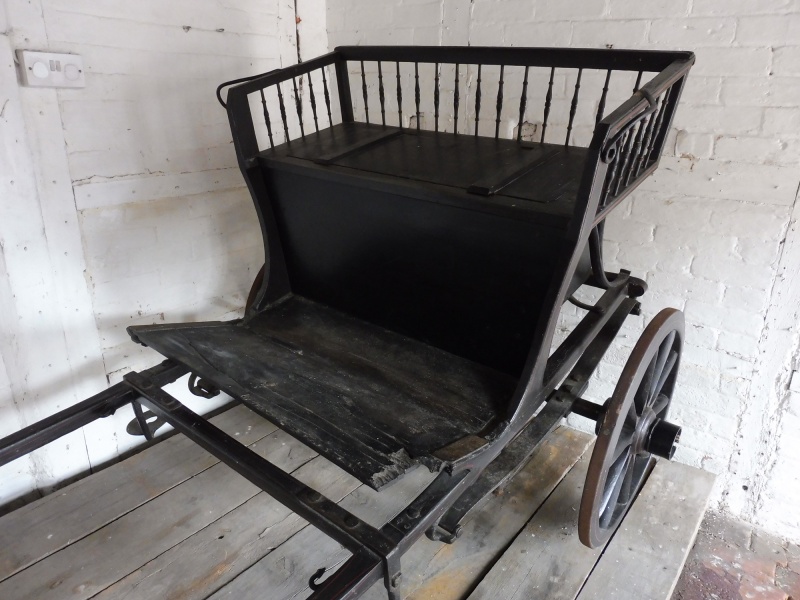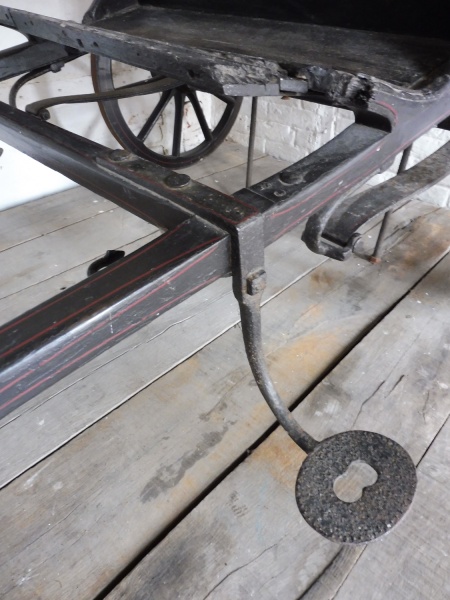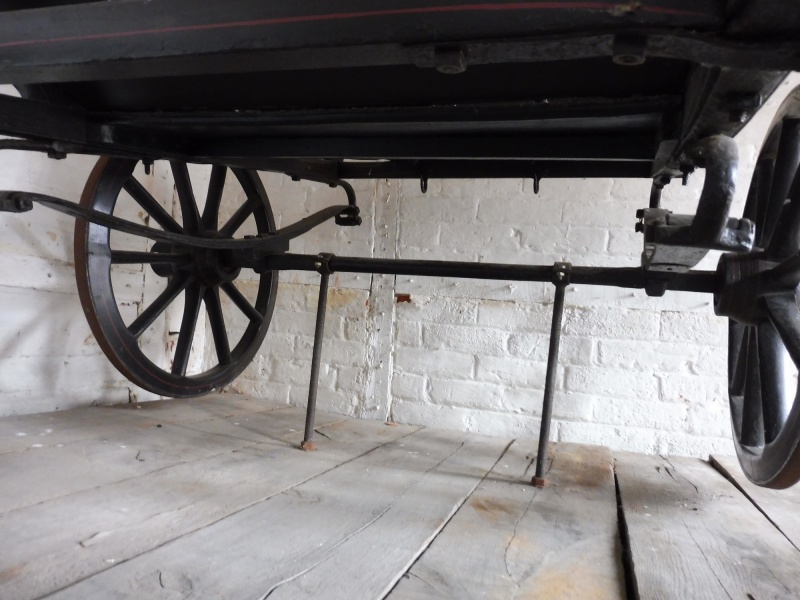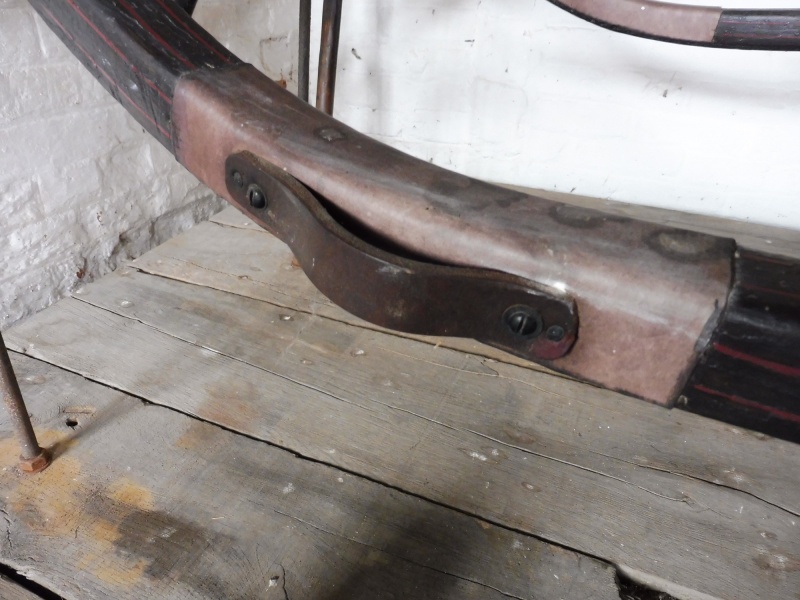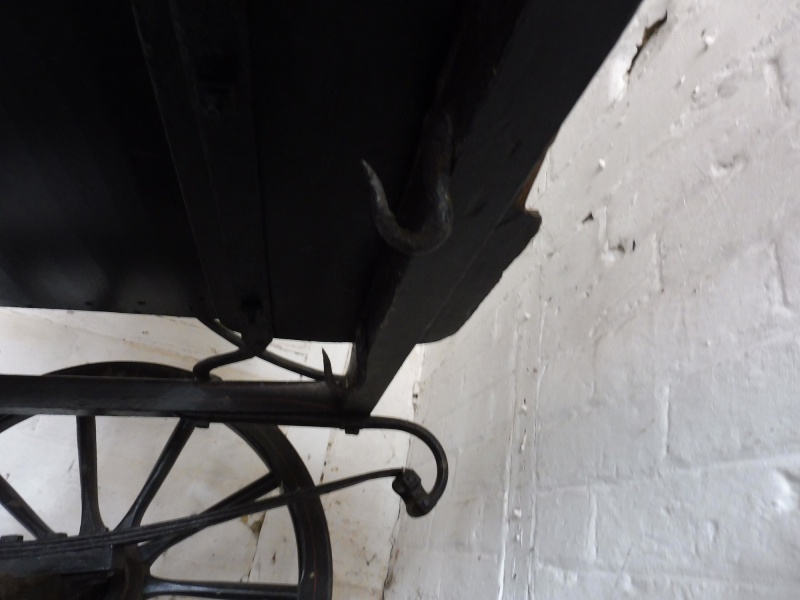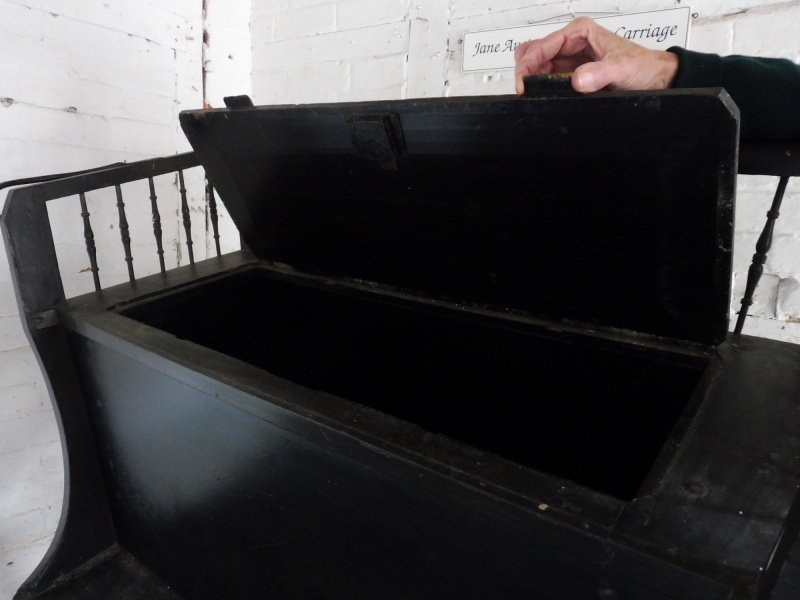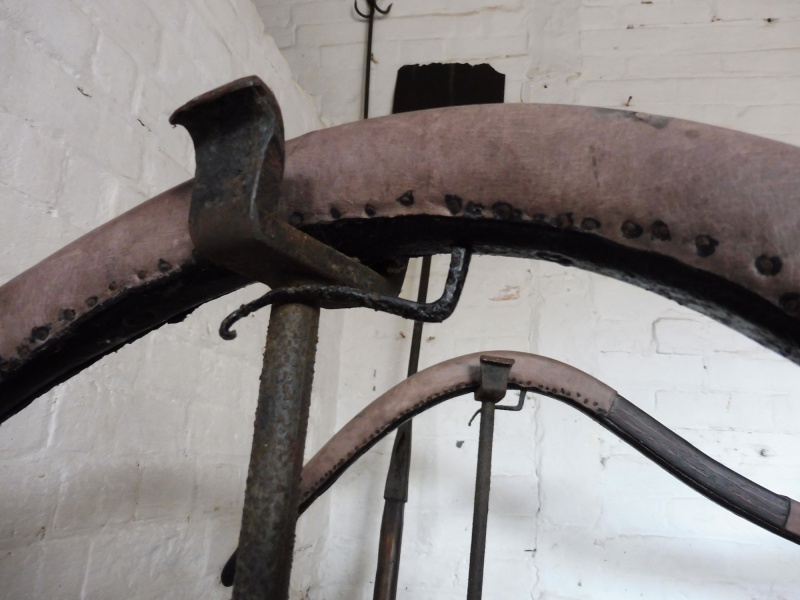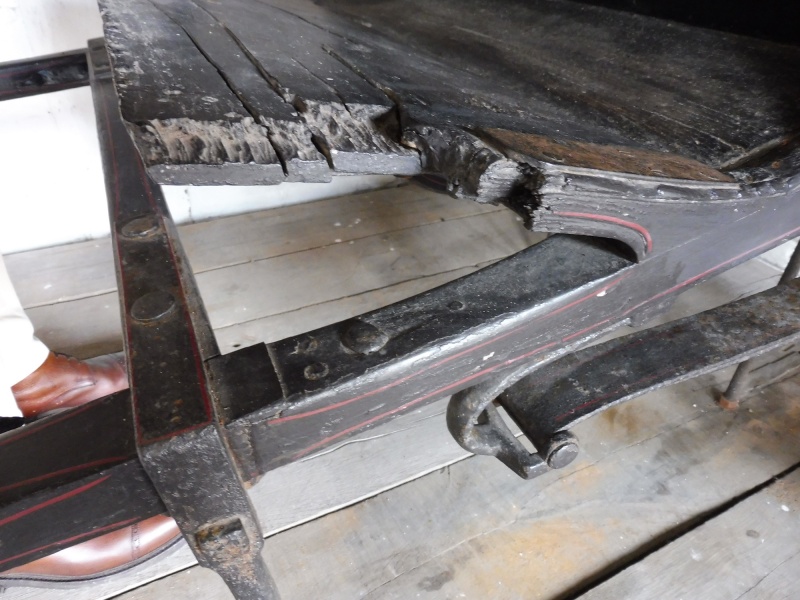Use the dots above to scroll through images.
Listed in 1 collection
Listed at 1 museum
Listed for 1 maker
Quick Details
Carriage Type
Donkey Gig
Date of Production
1810 circa
Materials used
Paint, Wood, Iron, LeatherSummary of Donkey Gig
A two wheeled Donkey or Pony Gig with a spindle back seat built circa 1810.
Jane Austen and her siblings used this little Donkey Gig in and around the village of Chawton near Winchester. It is a rare survival dating from around 1810 and is clearly village made being quite crude in construction but charming with it. At the time that this gig was made the Austen’s were not a wealthy family. It was pulled by a donkey, an animal that was cheaper to buy and to keep. With a village made gig this equipage was designed and built to function rather than be fashionable.
Very few small everyday gigs survive from this period and this may well be the earliest Donkey Gig in the UK. A rather special little carriage with an important link to an English literary icon.
Full description
The body of this Donkey Gig consists of a square spindle back seat. The spindles are particularly fine in their execution. The seat is supported by a curved iron brace that splits into two at the seat end and is attached to the cross bar at the rear of the gig. A box under the seat has been added which does not look original. It is accessed through a lid in the seat itself which is not a terribly practical arrangement. Usually if a storage area was under the seat it would be accessed from the front or from the back. On the cross bar at the back is a wood platform with two iron hooks underneath. This was most likely an area for a basket to be strapped to and observing how this arrangement would have been used, the seat would not have originally had a box underneath.
The footboard slopes upwards and is supported at the front by small curved iron supports attached to the shafts, the nearside support is missing. At the front corners of the seat rails are grab handles. Some attempt has been made to make them look elegant as they curve back on themselves and reflect the similar curves of the brackets that support the body. At the point where the splinter bar meets the shafts, two iron steps are fitted. They are bolted over the top of the shaft and have a curved bracket with a semi-circular plate, the plate has a hole in the centre. The swan neck shafts are served with brown leather at the tip end that is tacked on rather haphazardly and where the leather breeching fittings are attached. Elegant iron tug stops are fitted to the underside of the shafts and there are trace hooks at the splinter bar ends. The wheels have 10 spokes and iron tyres they are on common axles. On each side is a side spring which are not mounted centrally onto the axle.
This little gig is painted black with red lining on the body and wheels. The lining is not of a high standard but somehow appropriate for a village made gig of this type.
Inscriptions
On removal of the nearside wheel there was a shadow of the stamp of a possible maker, this was illegible.
Condition report
Apart from the addition of the box under the seat (still over 100 years old) this gig is in completely original condition. A small section of the footboard on the nearside is missing. The leather and paint work are in good condition and the carriage is generally well maintained.
Access information
This Donkey Gig is in the care of the Jane Austen House Museum
Chawston
Alton
Hampshire
GU34 1SD
Tel: 01420 83262
http://www.jane-austens-house-museum.org.uk/
Picture credit
Jane Austen House Museum/Amy Bracey

 Carriage Foundation
Carriage Foundation